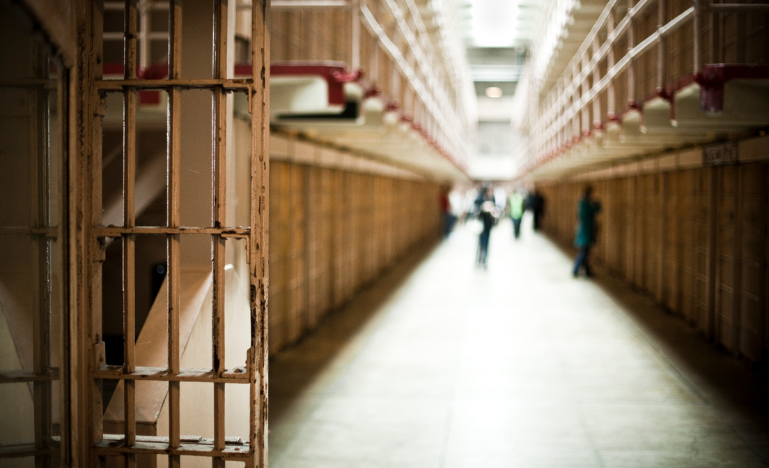Cautionnement : les projets de réforme mettraient des innocents derrière les barreaux
Des juristes estiment que la présomption d’innocence s’est perdue dans les débats politiques; ils insistent pour dire que renforcer les dispositions sur l’inversion du fardeau ou les dispositions progressives n’aurait pas l’effet dissuasif escompté et risquerait de porter atteinte aux droits garantis par la Charte

Selon les observateurs du droit, les projets de réforme du gouvernement fédéral touchant les mises en liberté sous caution et la détermination de la peine risquent de ne mener à rien en détournant l’attention et les ressources limitées de l’appareil judiciaire des questions sérieuses. Ils mèneront aussi à l’incarcération de personnes innocentes.
Le projet de loi C-14, déposé aujourd’hui par le ministre de la Justice Sean Fraser, étend l’application des dispositions sur l’inversion du fardeau de la preuve aux demandes de mise en liberté sous caution pour les crimes violents et les activités criminelles organisées. Cela comprend les vols d’automobiles avec violence, les introductions par effraction, la traite des personnes et la migration clandestine, les voies de fait, les agressions sexuelles, et les extorsions avec violence.
Le projet de loi contient des directives sur l’application du principe de l’entrave minimale en droit du cautionnement. Il modifierait le troisième motif de refus de la libération sous caution en obligeant les tribunaux à tenir compte du nombre de chefs d’accusation pesant sur l’accusé ou de la gravité de ceux-ci pour déterminer si la libération de la personne serait préjudiciable à la confiance dans l’administration de la justice.
« Aujourd’hui, il faut renforcer les lois pour mieux protéger nos communautés », a dit le ministre Fraser au moment de présenter le projet de loi.
« Cette nouvelle loi est déposée à la suite d’une consultation approfondie des forces de l’ordre, des provinces et territoires, des municipalités et des partenaires communautaires. »
Le ministre a déclaré que le système de justice n’a pas su s’adapter aux réalités vues et vécues par les Canadiens dans leurs communautés. C’est pourquoi les changements proposés mettent beaucoup l’accent sur la sécurité publique.
Le projet de loi contient plus de 80 mesures visant à alourdir les peines des récidivistes pour les vols d’automobiles, les activités criminelles organisées et les violations de domicile avec agression, ainsi qu’à autoriser les peines cumulatives pour les criminels violents et les récidivistes. Il prévoit aussi des peines plus sévères pour le vol à l’étalage organisé et l’abolition de l’admissibilité aux peines avec sursis dans le cas des agressions sexuelles.
Melanie Webb, présidente de la Section du droit pénal de l’Association du Barreau canadien et avocate de la défense en droit pénal à Toronto, précise que certaines des modifications proposées touchent des questions dont on tient déjà compte couramment aux audiences sur la mise en liberté sous caution et aux audiences de détermination de la peine.
« En termes pratiques, dans le cas d’une infraction grave accompagnée de violence aggravée ou d’une infraction liée aux armes à feu, le fait qu’il s’agisse du fardeau de la poursuite ou d’un fardeau inversé ne change pas grand-chose : ce sera toujours difficile pour la défense », explique-t-elle.
Dans l’imminence des mesures législatives, la Section du droit pénal de l’ABC a écrit une lettre ouverte (disponible uniquement en anglais) au ministre Fraser pour le mettre en garde : renforcer les dispositions sur l’inversion du fardeau de la preuve ou les dispositions progressives ne produirait pas l’effet dissuasif attendu et aurait peu de chances d’être constitutionnel, surtout compte tenu des conséquences disproportionnées pour les Autochtones et les autres accusés racialisés.
Autre mise en garde : ces réformes risquent de s’avérer contre-productives pour les ressources limitées de l’appareil judiciaire en détournant l’attention des questions sérieuses.
« De plus, comme aucun système de mise en liberté sous caution ne peut éliminer tous les risques, ces réformes seront sans doute critiquées si un nouvel incident très médiatisé où une personne en liberté sous caution commet une infraction grave, ce qui entraînera une nouvelle série de demandes de réforme du système de la mise en liberté sous caution », peut-on lire dans la lettre.
Me Webb rappelle que la lettre, initialement rédigée par David Parry, président sortant de la section et procureur adjoint de la Couronne à Toronto, a été commentée par des avocats de la Couronne et de la défense membres de la Section du droit pénal de l’ABC. On y voit donc un consensus quant aux questions les plus pressantes.
Dans la lettre, on réclame plus de ressources pour la supervision communautaire et une simplification du système de mise en liberté sous caution pour améliorer l’efficacité des tribunaux des libérations sous caution, ce qui impliquerait un élargissement des responsabilités des juges provinciaux.
À cet effet, la section a proposé des modifications législatives visant à préciser que toutes les audiences sur la mise en liberté sous caution peuvent être scindées. Elle souligne aussi l’utilité d’adopter une disposition qui exigerait expressément l’autorisation du tribunal pour tout contre-interrogatoire, le but étant de réduire le besoin de contre-interroger chaque caution qui comparaît devant le tribunal.
Cependant, Me Webb dit que pour régler les problèmes du système, le plus important est que les tribunaux des provinces aient des ressources suffisantes.
« Pour quiconque s’inquiète vraiment de ce système, il serait constructif d’aller assister à une journée complète d’audiences sur la mise en liberté sous caution dans un centre urbain achalandé, ou dans n’importe quel autre tribunal des libérations sous caution en fait, pour bien comprendre les problèmes uniques que ces tribunaux vivent au quotidien », dit-elle.
Au Canada, 71 % des détenus des prisons provinciales ou territoriales attendent leur procès et n’ont pas été condamnés. En Ontario, ce chiffre avoisine les 80 %. Les prisons sont surpeuplées. On signale souvent l’entassement de trois détenus dans des cellules minuscules. Plus tôt cette année, Paul Dubé, l’Ombudsman de l’Ontario, a écrit dans son rapport annuel que les établissements correctionnels provinciaux sont dans un état de « crise grandissante » avec un grave problème de surpeuplement et des cas fréquents de confinement aux cellules. Il a constaté que les conditions de détention avant procès se traduisent souvent par des réductions de peine.
Toujours selon Me Webb, c’est souvent le contraire à l’étranger. En Angleterre et au pays de Galles, par exemple, 80 % des détenus ont été condamnés. Seuls 20 % attendent leur procès.
« Ça montre à quel point les choses sont allées loin au Canada quant à la rigueur de nos conditions de mise en liberté sous cautionnement. »
Shakir Rahim, directeur du programme de justice pénale de l’Association canadienne des libertés civiles, a dénoncé les changements proposés. Il insiste que rien ne prouve que les libérations sous caution fassent augmenter les crimes.
Il souligne l’absence de données soutenant ces changements, surtout que la proportion des accusés se voyant refuser la libération sous caution est passée de 20 à 25 % dans les années 1980 à 76 % aujourd’hui. Il n’y a pas de données qui justifient les arguments sur le nombre de personnes libérées sous caution qui récidivent.
« Rien ne permet de dire que sur X personnes libérées sous caution au Canada, Y récidivent, et que parmi ces nouvelles infractions alléguées, telle proportion serait à caractère violent et telle constituerait un manquement aux conditions », résume Me Rahim.
L’ACLC et d’autres ont plaidé en ce sens dans le débat sur le projet de loi C-48 il y a trois ans. Arif Virani, ex-ministre de la Justice, et David Lametti avant lui, ont admis qu’il y avait une lacune. Le Comité sénatorial des affaires juridiques et constitutionnelles s’est penché sur les preuves en faveur de l’inversion du fardeau et a recommandé de recueillir plus de données. Trois ans plus tard, aucune donnée n’a été recueillie. Aucune province ni aucun territoire n’a annoncé le moindre projet à cet effet.
« On sait que Statistique Canada continue de tenir des réunions avec ses parties intéressées des provinces et des territoires, mais il n’y a eu aucune annonce au sujet d’un projet de collecte de données », dit Me Rahim.
« Il est très étrange de se faire dire que cet enjeu-là est la panacée de la question de la sécurité publique au Canada, quand pas un seul gouvernement ne s’est engagé à réellement évaluer le problème. Comment diable allons-nous alors évaluer ce projet de loi? »
Me Rahim parle des données de Statistique Canada, qui indiquent que les accusations de vol de véhicule motorisé ont diminué de 10 % depuis 2020 et d’un bon tiers depuis 2010. À Montréal, la violence par arme à feu a diminué de 47 % depuis 2021. Les fusillades sont en baisse de 40 % cette année à Toronto. Vancouver connaît son plus faible taux de criminalité violente en 23 ans.
« Bien entendu, on voit des affaires troublantes aux actualités et il faut les analyser, mais on nous dit presque carrément que les crimes sont en hausse marquée et que c’est à cause des mises en liberté sous caution », dit Me Rahim.
« Il n’y a pas de réelle volonté politique, pas de voix qui s’élèvent pour dire ce qu’il faut vraiment faire pour la sécurité publique, pour dire comment s’attaquer au problème de façon équilibrée », poursuit-il.
« Je crois qu’on a peur de dire la vérité aux Canadiens. »
Selon Me Webb, certaines personnes ne seront contentes que lorsque tous les accusés seront derrière les barreaux en attendant leur procès. Mais s’écrier « la prison, pas de caution » en rejetant le droit du cautionnement et en le qualifiant de « liberté sous caution des Libéraux » n’apporte absolument rien d’utile.
« C’est démoralisant », dit-elle.
« Je comprends que lorsqu’on rapporte des incidents tragiques aux nouvelles, ça frappe l’imaginaire. Les gens veulent tout de suite savoir si l’accusé a été libéré sous caution – c’est tout simplement inutile de citer ces cas en exemple. Ça ne devrait pas être un débat politique », ajoute-t-elle.
À la base, ce n’est pas une question de réforme législative, mais plutôt de fonctionnement des tribunaux.
« Quand je parle des retards des tribunaux des libérations sous caution, je parle d’expérience », dit Me Webb. « Allez faire un tour au 10, rue Armoury (un palais de justice à Toronto). Vous verrez qu’on ne peut pas passer tous les accusés dans la liste. On ne peut pas tenir des audiences de contestation de la libération sous caution pour tous les accusés qui l’ont obtenue. Et l’histoire des personnes relâchées tout de suite après leur arrestation, c’est un mythe fantaisiste. »
Elle dit qu’il faudrait davantage de ressources pour des groupes comme la Société John Howard ou la Société Elizabeth Fry pour les personnes ayant des problèmes de santé mentale et de dépendance qui n’accèdent pas aux traitements dont elles ont besoin.
Me Rahim blâme le silence dans la classe politique au sujet de la présomption d’innocence. Il signale le cas d’Umar Zameer, dont la libération sous caution après son inculpation du meurtre d’un policier a été dénoncée par tout le monde, même par Doug Ford, premier ministre de l’Ontario. Et devinez quoi; près de trois ans plus tard, il a été acquitté.
Sans libération provisoire, des personnes innocentes perdraient leur emploi et leur liberté et ne pourraient plus voir leurs êtres chers, sans avoir rien fait de mal », prévient-il.
« C’est là le vrai problème. Tous les accusés sont présumés innocents, mais en plus, la moitié des affaires criminelles se terminent sans déclaration de culpabilité. On a vraiment oublié ça dans ce débat », dit-il.
Et qu’arrivera-t-il si ce projet de loi devient loi?
« Des personnes innocentes se retrouveront derrière les barreaux », conclut-il.


